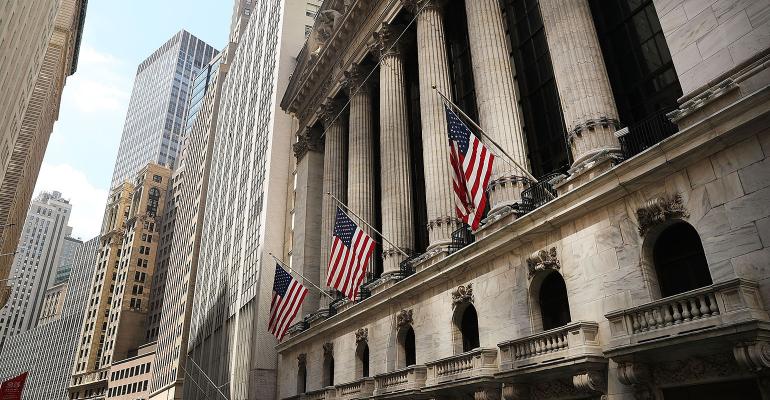By Elena Popina and Sarah Ponczek
(Bloomberg) --Does the chaos embroiling equity markets have an obvious precedent that can guide investors on how it plays out?
While the Crash of ’87 and 2008 financial crisis have been name checked, a more relevant example may be 1998, the first test of the internet bubble. It was a period in the market that has some eerie parallels to today. Stocks were in the eighth year of a giant bull run that had relentlessly expanded valuations. The Federal Reserve had just begun a tightening cycle. And behind the scenes, sophisticated speculators were getting into trouble.
While drama played out rapidly, its depth may be a lesson for investors wondering how bad things can get in such an environment. The S&P 500 Index violently plunged 19 percent in a matter of weeks, from a high on July 17, 1998, through the last day of August. Yet, the decline was all but forgotten two months later.
“In both instances the market was acting giddy, euphoric,” said Howard Ward, chief investment officer of growth equities at Gabelli Funds. “A highly speculative market then, versus a bitcoin craze now. Individual investors entering the market late only to get crushed when the it sinks. Stocks rising exponentially when there were few factors justifying the advance.”
Also: quants. While today’s upheaval is being linked to funds selling futures that fluctuate with market volatility, the travails of 1998 are forever tied to the hedge fund Long-Term Capital Management, whose soured investments in over-the-counter derivatives required a $3.5 billion bailout brokered by the Federal Reserve.

Just as now, unemployment in 1998 hovered near record lows, consumer and business sentiment were on the rise and the Fed was making gradual steps to raise interest rates. The rally in equities was driven by technology companies, a sector that has led the market for two years.
The S&P 500 gained 31 percent in 1997 and was up 22 percent through its 1998 high, spurring warnings the market had become too complacent. The gauge’s 19 percent rally in 2017 and a 7.5 percent rise this year through last week triggered similar concerns.
Then as now, valuations were pushed to extreme level, with analysts struggling to justify stocks trading above their multiyear averages. Before the market selloff started last week, stocks in the S&P 500 were selling for 18.5 times projected earnings, compared with a 10-year average of 15.5 times. In 1998, they were at 25 times projected earnings.
“The concern about valuations is something that 2018 and 1998 have in common, but there are nuances,” said Peter Garnry, head of equity strategy at Saxo Bank. “What is different is that companies had little cash to support those valuations in 1998, and this is not the case now. This was a painful adjustment, but the companies learned from their mistakes.”
The global macro-economic environment has also shifted dramatically, and Garnry and Ward say this is a key difference from the dot-com era. Back then, oil was tanking, developing currencies plunged, and Asian economies were mired in crisis. When Russia defaulted on its debt in August 1998, it set off ripple effects worldwide. Today, the macro environment is more favorable and global growth is gaining steam.

Could this correction be as painful, but short-lived, as it was in 1998? We’ll see. Fundstrat’s Thomas J. Lee described the recent selloff as “healthy” because it’s not in response to deteriorating fundamentals. Meanwhile, Dennis DeBusschere, head of portfolio strategy at Evercore ISI, called it “long overdue.”
“There are examples in history, 1966, 1998, and 1987, where those were corrections that eventually gave way to future market gains, but investors had to stomach some volatility in between,” said Brent Schutte, chief investment strategist of Northwestern Mutual Life Insurance Co.’s wealth-management unit. “When the environment changes, those people have to reposition their portfolios, which often causes sharp, but short, corrections.”
To contact the reporters on this story: Elena Popina in New York at [email protected] ;Sarah Ponczek in New York at [email protected] To contact the editors responsible for this story: Arie Shapira at [email protected] Chris Nagi, Eric J. Weiner





